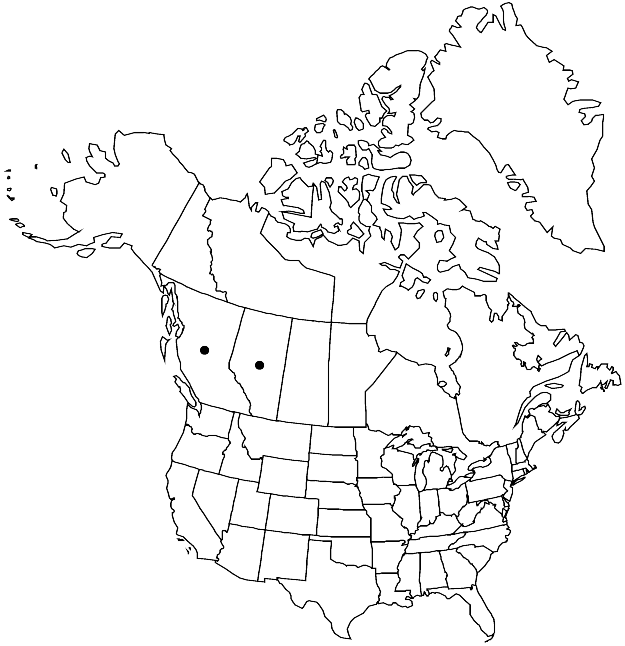Bartramia halleriana
Sp. Musc. Frond., 164. 1801.
Plants in lax to dense tufts, greenish to yellowish brown. Stems 15 cm. Leaves crisped when dry, erect-spreading or sometimes secund when moist, narrowly lanceolate to linear, 4–7 mm; base laxly sheathing, shoulders well developed, firm; margins revolute from shoulders to high in acumen, denticulate in shoulders, spinose-dentate distally, teeth paired; apex long-subulate; costa excurrent, prominent, distal abaxial surface rough; basal laminal cell walls thin; medial and distal cells 5–12 × 4(–10) µm, prorulae high. Sexual condition autoicous or synoicous. Seta 0.2(–0.8) cm, curved. Capsule inclined, subglobose to pyriform, asymmetric, 1.5(–2.5) mm; operculum conic convex; peristome double; exostome teeth 500–550 µm, granulose proximally, papillose distally; endostome basal membrane high, segments slightly shorter than teeth, striate papillose, cilia rudimentary. Spores 15–24 µm.
Phenology: Spores 15-24 µm, mature Jun–Sep.
Habitat: Crevices of shaded cliffs, rock outcrops in humid forests
Elevation: moderate elevations (200-500 m)
Distribution

Alta., B.C., s South America, Europe, Asia, Pacific Islands (Hawaii, New Zealand), Australia (Tasmania).
Discussion
Bartramia halleriana is quite similar vegetatively to robust forms of B. pomiformis. However, the short, curved seta as long as or slightly longer than the capsule is distinctive.
Selected References
None.